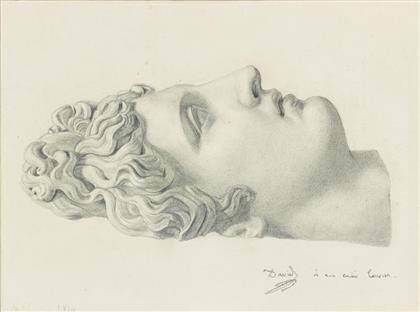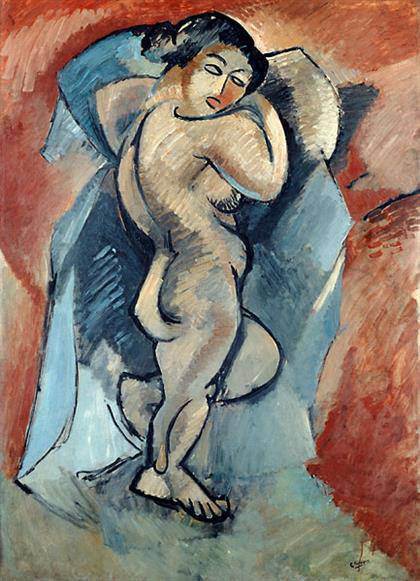
David d’Angers (1788–1856)
La Douleur, 1811
plaster, 21 ¼ x 12 5/8 x 10 ¼ inches (54 x 32 x 26 cm)
Roberta J.M. Olson and Alexander B.V. Johnson

David d’Angers (1788–1856)
Study after a Plaster Cast of the Apollo Belvedere, ca. 1814
Black chalk on laid paper, 7 ½ x 10 3/8 inches (19 x 26.5 cm)
Collection Louise Grunwald
David d’Angers: Making Modern Monument at the Frick ‘David d’Angers: Making the Modern Monument’ unites medals, portrait busts, bas-reliefs, and statuettes by French sculptor Pierre-Jean David d’Angers (1788–1856). Frick Collection, September 17 through December 8, 2013.]]>
Source: The Frick Collection
Lauded by Victor Hugo as the Michelangelo of Paris, French sculptor Pierre-Jean David d’Angers (1788–1856) produced many of the most iconic portraits and ambitious public monuments of the Romantic era. An experimental writer, outspoken Republican, and teacher to some of the greatest sculptors of the nineteenth century, David d’Angers cultivated friendships with an array of contemporary artists, writers, scientists, and politicians, from Honoré de Balzac and Niccolò Paganini to Johann Wolfgang von Goethe and Eugène Delacroix.
This exhibition assembles some forty-five works by David on paper and in wax, terracotta, marble, bronze, and plaster, as well as rare nineteenth-century reproductions of his work in photographs and engravings. The depth and variety of David’s oeuvre are well represented, beginning with his early prize-winning “tête d’expression” bust “La Douleur” (1811, Roberta J.M. Olson and Alexander B.V. Johnson) and concluding with some of the last medallions he made, such as his portrayal of French painter Rosa Bonheur (1854, private collection).
The show is organized by Emerson Bowyer, Andrew W. Mellon Curatorial Fellow, The Frick Collection. He comments, “In many ways, the sculptural achievements of David d’Angers parallel those of Géricault and Delacroix in painting. His theoretical and aesthetic innovations greatly contributed to our modern obsessions with memory and celebrity, and provide a timely reminder of the possibilities for politically-engaged artistic practice in the twenty-first century.” Support for the exhibition is made possible by Antonio Weiss and Susannah Hunnewell, Margot and Jerry Bogert, and The Andrew W. Mellon Foundation.
Related content
Portraits, Pastels and Prints: Whistler in the Frick (exhibition, 2009)
Follow us on:


